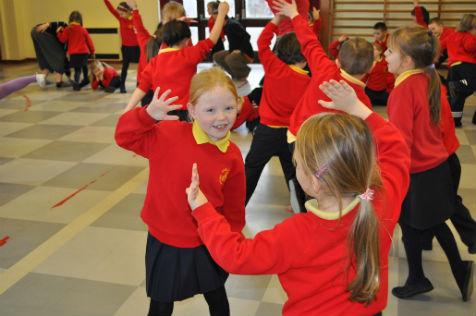Now dance is poised to be a foundational entitlement for all school children with pathways for specialisation as students move through the new Australian arts curriculum.
Dance educators successfully argued for the inclusion of dance in the new Australian Curriculum: The Arts, and consultation through the curriculum design process drew widespread agreement that all primary school students should participate in sequential dance learning (along with drama, media arts, music and visual arts) from the first to final years of primary school. The arts curriculum is expected to be approved soon, but there is also an Australia-wide curriculum for the Birth – Five years: the Early Years Learning Framework which aims to provide an educational framework for these influential years.
But where are the teachers for these new students? Whilst some tertiary dance courses thrive, others have been wound down over recent years. Several dance courses have disappeared leaving QUT, WAAPA, the VCA, Deakin, Adelaide College of the Arts and NAISDA as the main training institutions for dance performance. University dance offerings for pre-service teachers who will need to implement dance in the primary years as well as those who will become specialist dance teachers also appear to be diminishing.
What are the implications of these developments for the dance community in shaping Australian culture? How might we work together to locate dance in the public psyche in a similar way to sport?
The session I chaired at the National Dance Forum asked what role dance education plays in shaping Australian culture for tomorrow. I hoped to follow the spirit of the NDF by embracing views on dance education from different perspectives and encourage ‘surprising and sometimes provocative ideas’.
In the program introduction Footscray Community Arts Centre Director and CEO Jade Lilley answered the meta-question ‘Why dance?’ by observing that the physical language of dance provides a place for our stories. ‘Through these stories, we grow our sense of self, our pride and ultimately, our communities – celebrating our rituals and culture,’ she wrote.
The range of this story-telling was evident in the dance education session where the stories came frompre-school , special development school, university and even prison.
Panellist Jan Deans from the University of Melbourne’s Early Years Centre spoke about her work with the early years prior to school and illustrated her talk with engaging video snippets. Sue Mullane drew on her experience from a Melbourne special developmental school to speak about the unique contribution of dance-based learning to well-being concepts that are being increasingly recognised as beneficial for students. From the Victorian College of the Arts CA, Jenny Kinder focused on her journey into the tertiary sector and identified the influence of dance elder Shirley McKechnie upon her work as Tasdance founder. Dance artist, teacher and Phunktional director Gerard Veltre, conveyed some of the challenges and responses he met from a recent dance project he led in a women’s prison.
Key issues emerged as a result of further questions: Who should teach dance if it is in the school curriculum? Do we want non-expert generalist primary teachers to teach dance? How will we support access to dance? What are we doing with students who are training in dance? What should be the focus of their dance studies?
One of the ambitions identified in Dance Plan 2012 was for ‘Dance to be an integral part of every young person’s education’. The new Arts curriculum is aspirational in providing an entitlement to dance for all young Australians. Positioning dance there has been hard won and is well supported by consultation feedback.
We do not expect generalist primary teachers to be mathematics or science experts but they are expected to work in these areas with young children and to be competent in teaching and learning. We believe that the foundational principles of working with the body and movement to make and respond to dance are achievable for primary schools with improvements to pre-service teacher education and new support for professional learning for teachers as the new curriculum rolls out.
This issue of ‘Who should teach dance in schools?’ is linked to the purpose of tertiary dance training. As David Throsby identified in ‘Don’t Give Up Your Day Job’ (2003), teaching is an important income generator for 95% of dancers. Learning to perform, choreograph, direct and appreciate dance must surely be accompanied by some focus on how to teach dance. As noted in Dance Plan 2012: ‘The opportunity is huge for dance to be a valued part of every person’s education, offering creative, healthy and stimulating experiences for all Australians throughout their lives.’
Our goal now is to seize the current opportunity and effect cultural change together through dance education to ensure that dance is firmly located in the Australian psyche.





